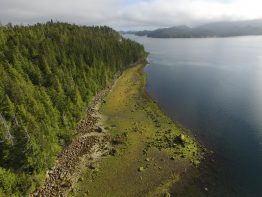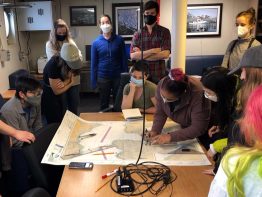Indigenous people have been stewarding the ocean for thousands of years. This stewardship has appeared in many different forms around the world, all of which represent a reciprocal relationship between humans and the sea rooted in deep, place-based knowledge. From octopus houses in Haida Gwaii to fish ponds in Hawai’i, an Indigenous mariculture renaissance is making waves as groups across the Pacific seek to revitalize these ancient techniques and traditions.
Read more at Washington Sea Grant »How COVID-19 changed research on the high seas
For crew members of the UW research vessel Thomas G. Thompson, the last two years have been a test of preparedness and resilience while conducting research at sea. On top of the usual threats of rough seas and homesickness, seafarers now have to factor in the worldwide coronavirus pandemic, which has had a special knack for spreading rapidly on ships. While the isolated nature of research on the open ocean might have seemed like welcome distance from the rest of humanity during the early days of the pandemic, many will remember how some of the first stories of the virus’ potential came from shipboard outbreaks.
Read more »This tiny coastal fish wears a toothy coat of armor
The ocean is full of otherworldly creatures, seemingly from alien planets with alien capabilities. In most cases, the award for craziest looking critter would go to an invertebrate. But many fish are contenders, too, and there’s an oddly adorable one common in northwest waters. What does it look like? Imagine a golf ball. Now put some googly eyes on it and add a suction cup to its belly.
Read more »Shift work helps marine microbes share scarce ocean resources
Though they may be small, microorganisms are the most abundant form of life in the ocean. Marine microbes are responsible for making roughly half of the organic carbon that’s usable by life. Many marine microbes live near the surface, depending on energy from the sun for photosynthesis. Yet between the low supply of and high competition for some key nutrients, like nitrogen, in the open ocean, scientists have puzzled over the vast diversity of microbial species found there.
Read more at UW News »Bubbles of methane rising from seafloor in Puget Sound
The release of methane, a powerful greenhouse gas responsible for almost a quarter of global warming, is being studied around the world, from Arctic wetlands to livestock feedlots. A University of Washington team has discovered a source much closer to home: 349 plumes of methane gas bubbling up from the seafloor in Puget Sound, which holds more water than any other U.S.
Read more at UW News »





